Kingdom Animalia - INVERTEBRATES PT. 2
1/53
There's no tags or description
Looks like no tags are added yet.
Name | Mastery | Learn | Test | Matching | Spaced |
|---|
No study sessions yet.
54 Terms
Chitin
a polysaccharide; major component of arthropod exoskeletons
Closed circulatory system
a circulatory system in which blood remains contained within vessels
Coelom
fluid filled cavity surrounded by muscle tissue; true body cavity
Exoskeleton
an exposed skeleton, external to other body tissues
Hemolymph
a circulating blood-like fluid found in some invertebrates
Mandibles
chewing jaw-like mouthparts of arthropods
Mantle
a tissue that secretes a calcium carbonate shell in many molluks
Open circulatory System
a circulatory system in which fluid circulates within a body cavity
Segmentation
division of an animal’s body into segments
water vascular system
a hydraulic system for movement and circulation in echinoderms
Ostia
opening in the heart’s wall
Phylum Annelida
a group of bilaterally symmetrical worms known for their segmented bodies.
Do annelids display cephalization?
yes
What kind of gut do annelids have?
complete with a coelom
What kind of circulatory system do annelids have?
closed circulatory system
What kind of brain do annelids have?
cerebral ganglia functions as the rudimentary brain connected with a ventral nerve cord
What functions as simple kidneys for excretion of nitrogen wastes in anndelids?
Nephridia
What provides traction for movement of some annelids through soil?
setae
Annelid - Lumbrius (earthworm)
Know the parts
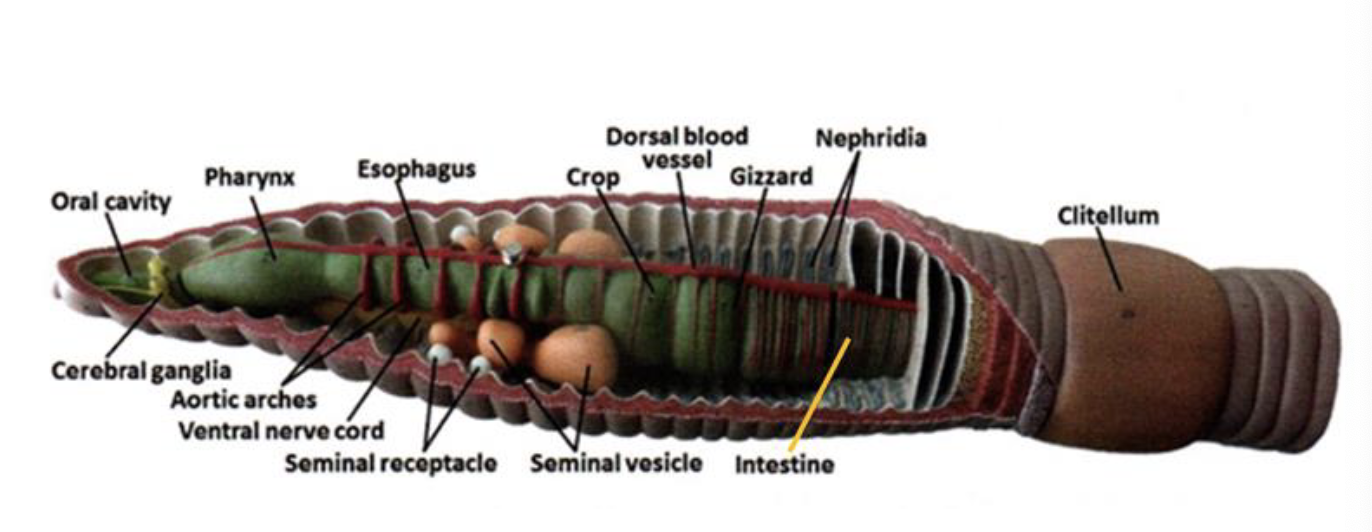
Annelid - Leech
A type of parasite known for feeding on the blood of other animals, having a segmented body and often used in medicinal applications.
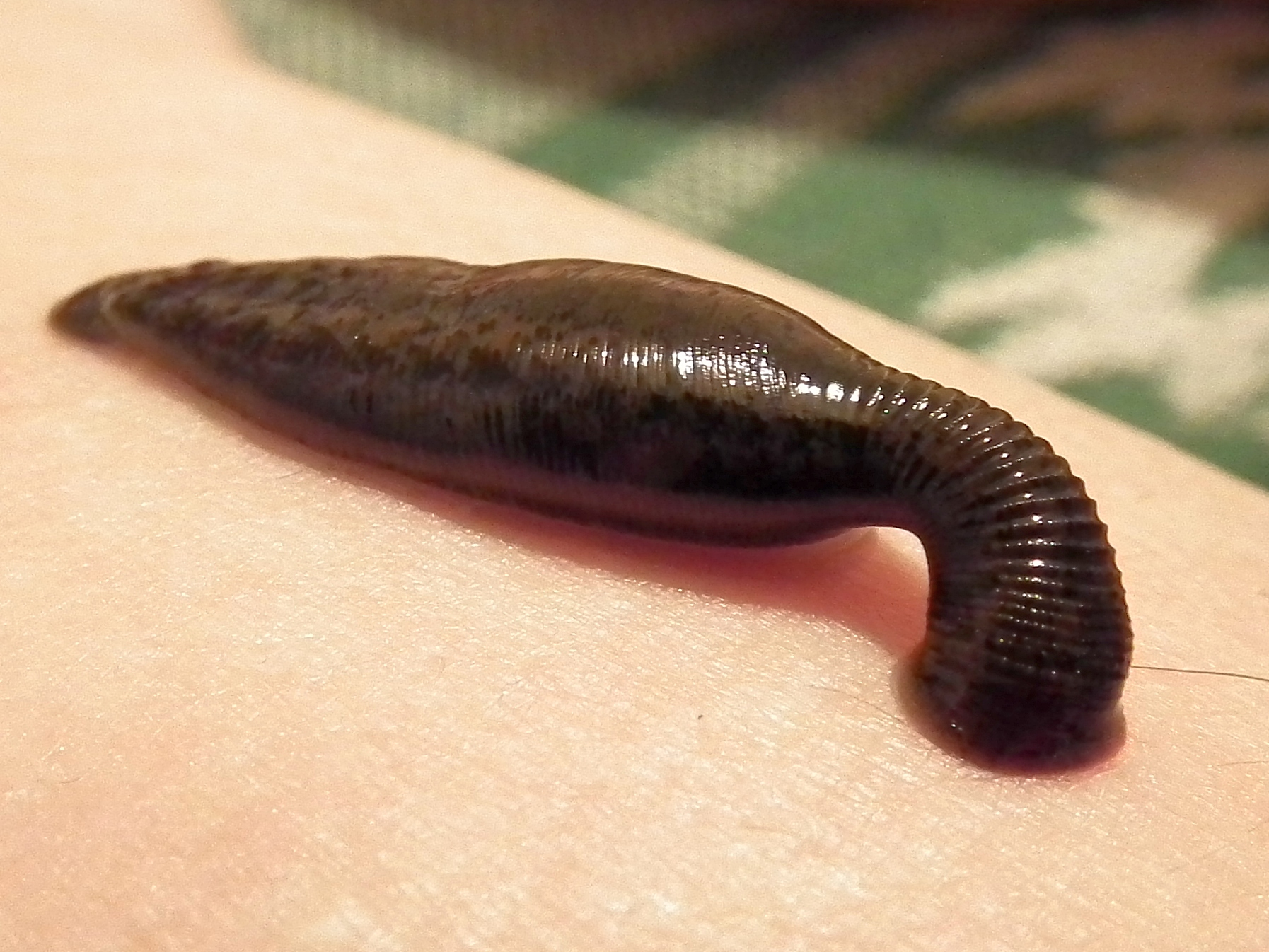
Annelid - Bristle worm
A type of marine annelid characterized by bristles called chaetae, often found in diverse habitats and exhibiting a variety of feeding strategies.
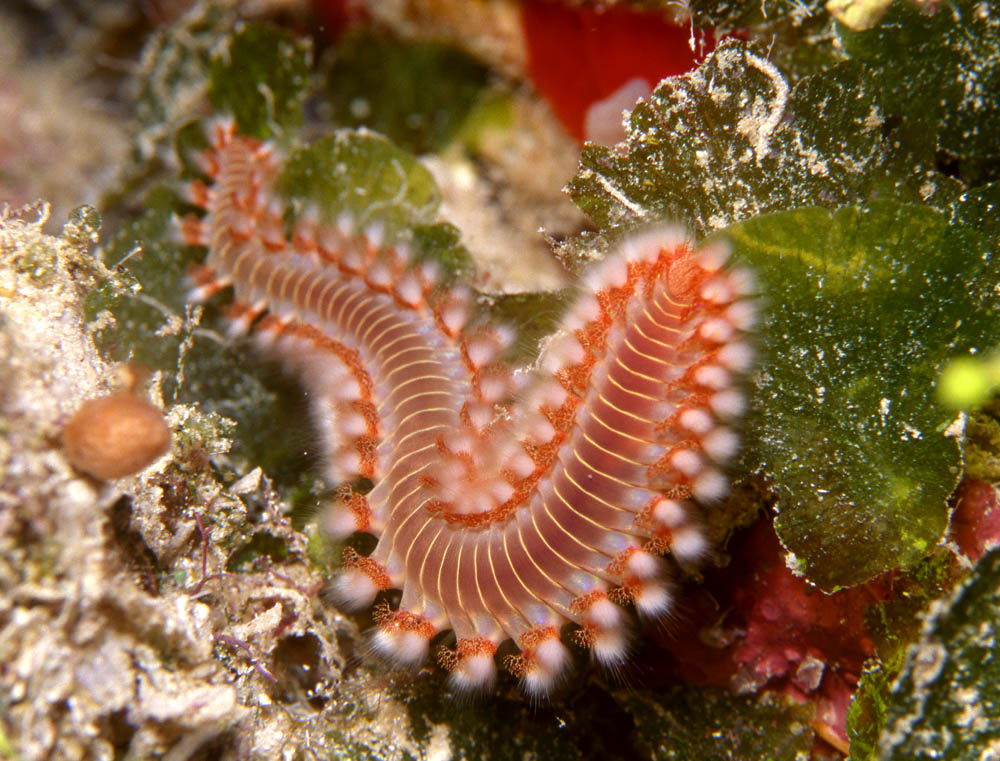
Phylum Arthrodpoda
A large phylum of invertebrate animals that include insects, arachnids, and crustaceans, characterized by exoskeletons, segmented bodies, and jointed appendages.
What kind of appendages do arthropods have?
jointed
What kind of skeleton do arthropods have?
exoskeleton with chitin
What is the water proofing coat on arthropods?
A waxy layer called the cuticle.
What kind of symmetry do arthropods have?
bilaterall
What are the three major segments of arthropods?
head, thorax, and abdomen
What kind of gut do arthropods have?
complete with a coelom
What kind of circulatory system do arthropods have?
open circulatory system containing hemolymph
What are other distinctive characteristics of arthropods?
jointed mouthparts
antennae
compound eyes
What kind of eyes do arthropods have?
compound eyes
Arthropods - horseshoe crab
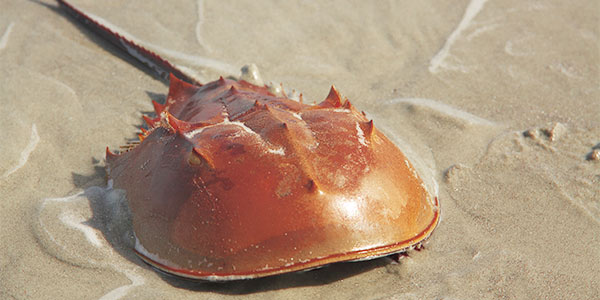
Arthropods - spider and insects
two major classes of arthropods, characterized by segmented bodies, jointed appendages, and exoskeletons.
Arthropods - crayfish
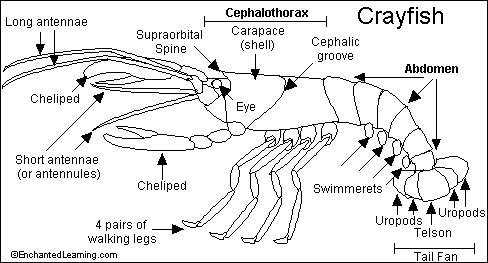
Phylum Molluska
A diverse group of invertebrates, including snails, clams, and octopuses, known for their soft bodies, many possessing a hard shell, and a muscular foot used for locomotion.
Are mollusks segmented?
no
Some but not all mollusks display _____ in their head.
Cephalization
What kind of gut do mollusks have?
complete gut within a coelom
What kind of circulatory system do mollusks have?
open circulatory system
What are other distinctive features do mollusks have?
mantle
secretes calcium carbonate to produce a hard shell
What do mollusks have to scrap food with?
radula
Arthropod - clam shells
have a mantle and ventral muscular food
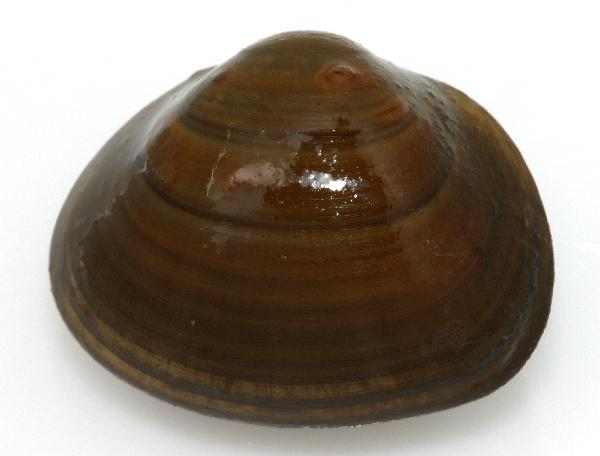
Arthropod - whelk shells
have a mantle and ventral muscular food
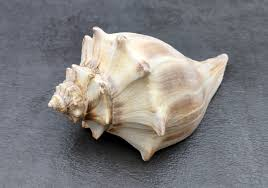
Arthropods - Squid and octopus
Lack a shell
highly developed nervous system
closed circulatory system
bilateral symmetry with cephalization
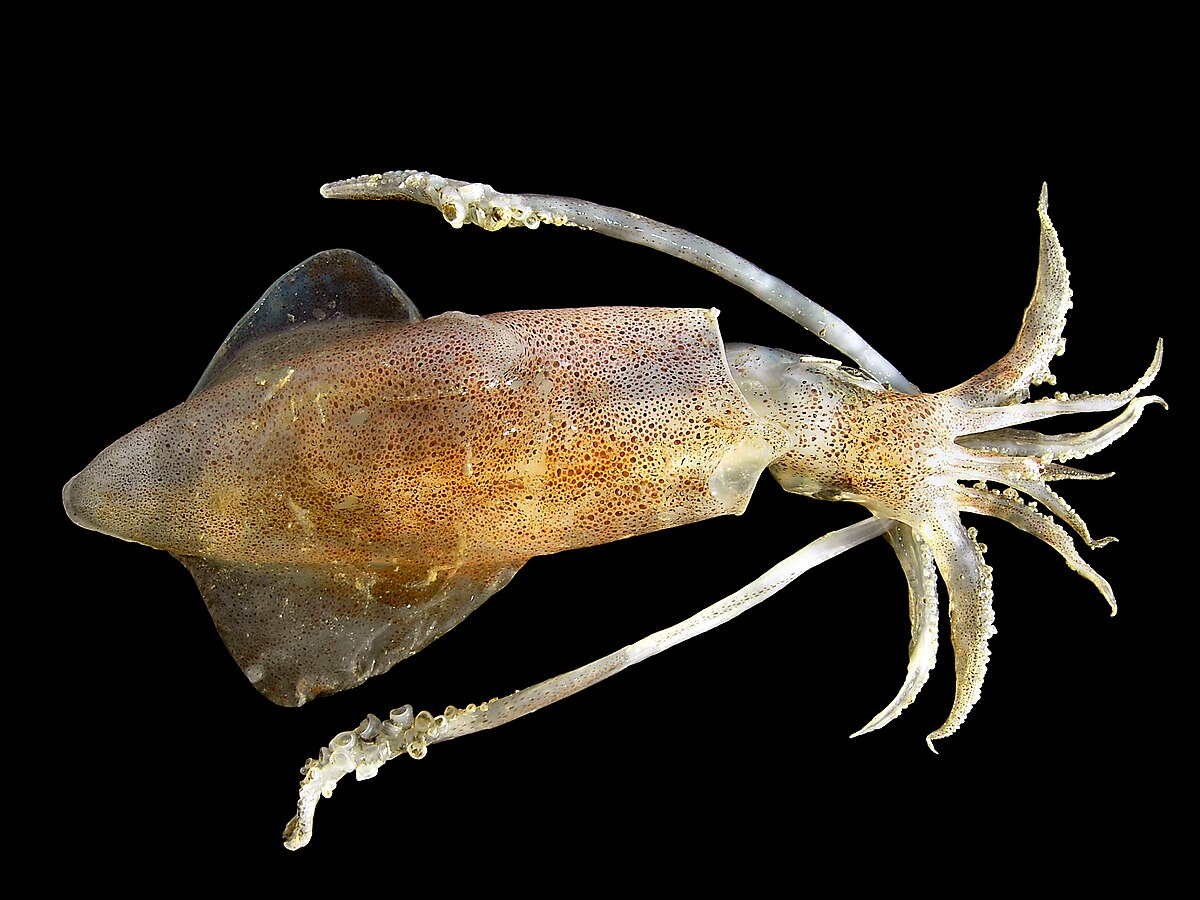
Phylum Echinodermata
A group of marine animals characterized by radial symmetry, a water vascular system, and a calcareous endoskeleton. Examples include starfish, sea urchins, and sea cucumbers.
What kind of symmetry do echinoderms have?
radial
Are echinoderms segmented?
no
Echinoderms are our ____ invertebrate “relative”
closest
What kind of gut do echinoderms have?
complete
What kind of circulatory system do echinoderms have?
open circulatory system
Echinoderms water vascular system
is a network of fluid-filled canals used for locomotion, feeding, and gas exchange.
Kinds of Echinoderms
include sea stars, sea urchins, and sea cucumbers.
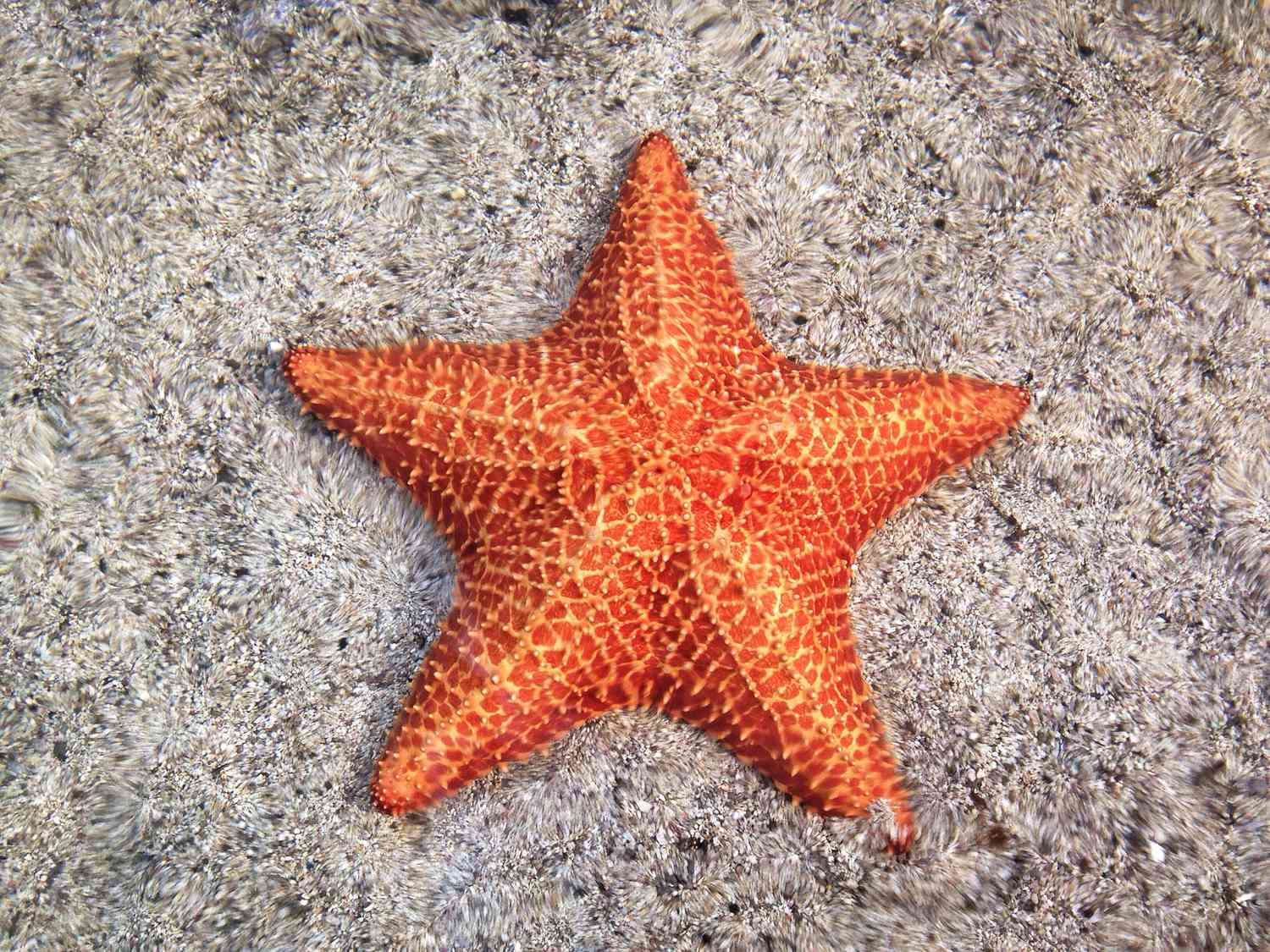
Madreporite
is a sieve-like structure on the upper surface of echinoderms that regulates water intake into the water vascular system.
Do echinoderms display cephalization?
no